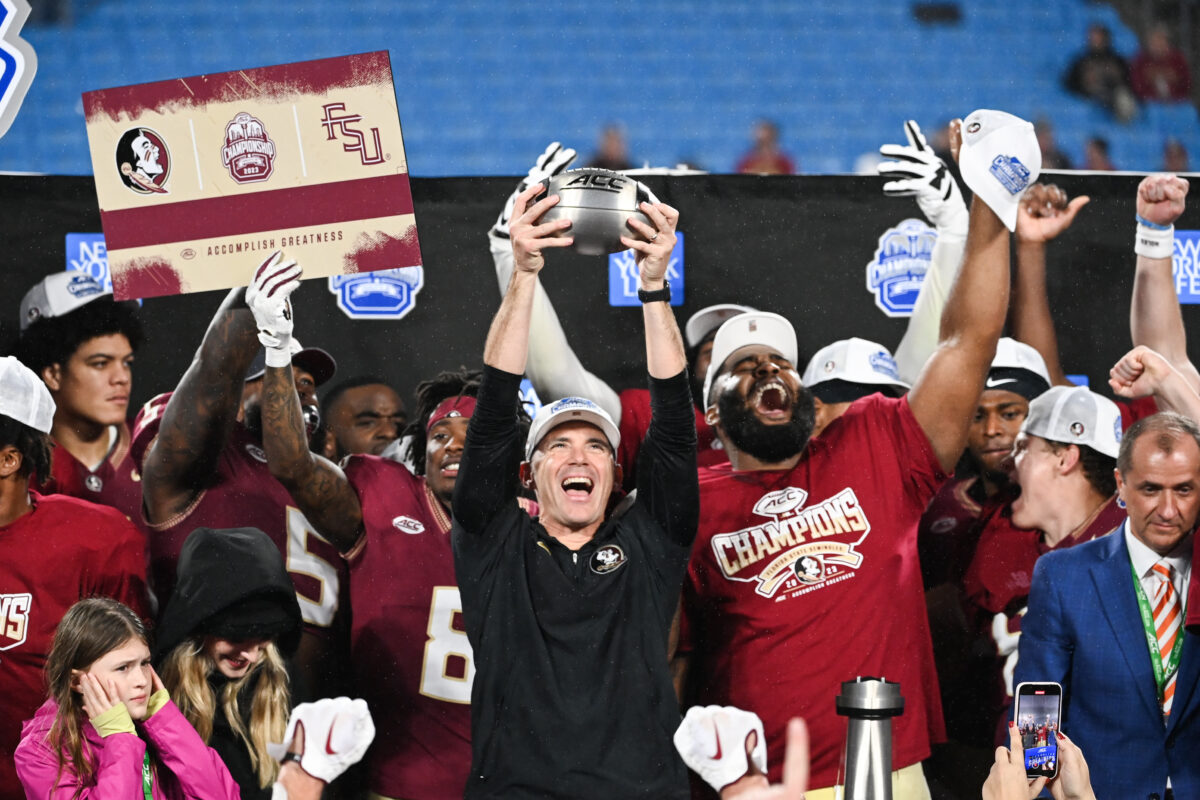Mike Norvell is thriving in every aspect of his job.
The Florida State head coach took over in 2020 and has made the program better on the field each season. 2022’s 10-win campaign was merely the prelude for a 13-win 2023 and ACC title. The only thing that could derail that momentum was quarterback Jordan Travis’s broken ankle — just the caveat the College Football Playoff selection committee needed to omit FSU from a shot at a national championship.
That’s not the only thing he’s doing well. As a leader of student athletes, his staff has found a way to focus on the former part. This summer, that led to a $150,000 bonus.
This might be one of the most impressive climbs in college football: as recently as 2019, Florida State was dead last in FBS in multi-year Academic Progress Rate at 936. Their single-year rate this year was 997, just 3 points off perfection. https://t.co/xnC9fNFDY4 pic.twitter.com/JUgqCBvffY
— RedditCFB (@RedditCFB) June 6, 2024
The NCAA’s Academic Progress Rate (APR) is a tool used to measure how student athletes are performing in the classroom. It measures every scholarship player on a team’s roster in two categories: whether they’re on pace to graduate and whether they’ve remained academically eligible to play their sport. You get one point for each “yes” answer you earn each year; those points are then divided by the number of total points and that percentage is multiplied by 1,000 to create an APR score.
Programs must maintain a rolling four-year average APR of 930 or better to remain eligible for postseason play. Florida State flirted with that line in the waning days of the Jimbo Fisher era, then began its rise under Willie Taggart before jumping toward the top of the list under Norvell. Here’s FSU’s rolling APR scores since bottoming out in 2015-2016 and where they’ve ranked among FBS programs:

Of course, Florida State isn’t the only elite program to post impressive APR numbers. Here are the top 10 FBS football programs when it comes to rolling four-year APR rates after the 2023 academic year:
- Ohio State, 1,000 APR score
- Alabama, 997
- Northwestern, 996
- North Carolina, 996
- Clemson, 995
- Cincinnati, 994
- Michigan, 993
- Wisconsin, 993
- Air Force, 992
- Minnesota, 992
Having a high octane program with a massive focus on athletic performance doesn’t disqualify you from posting great APR scores. Of course, it likely also helps that these programs are large enough to take on additional academic support staff where needed. Even so, something clearly changed at Florida State that allowed Norvell and his staff to turn a weakness that threatened to cancel the team’s postseason plans into a strength.
